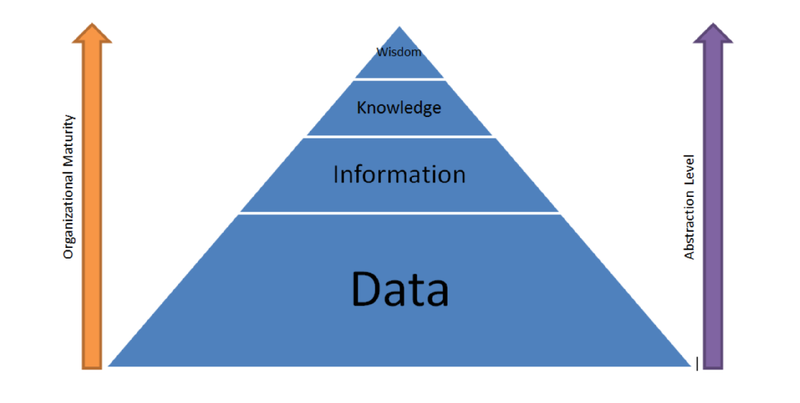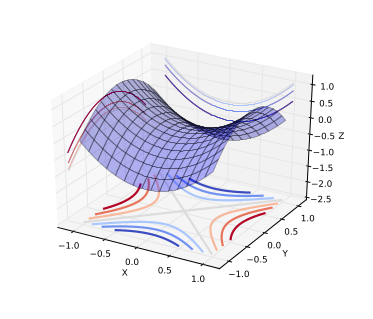Why Deep Learning Works – Key Insights and Saddle Points
Why Deep Learning Works – Key Insights and Saddle Points
A quality discussion on the theoretical motivations for deep learning, including distributed representation, deep architecture, and the easily escapable saddle point.
This post summarizes the key points of a recent blog post by Rinu Boney, based on a lecture by Dr. Yoshua Bengio from this year's Deep Learning Summer School in Montreal, which discusses the theoretical motivations for deep learning.

"To generalize locally, we need representative examples for all relevant variations."
Deep learning is about learning multiple levels of representations, corresponding to multiple levels of abstractions. If we are able to learn these multiple levels of representation, we are able to generalize well.
After setting the general tone of the post with the above (paraphrased) statement, the author presents a number of different artificial intelligence (AI) strategies, from rule-based systems to deep learning, and notes on at which levels of learning their components function. He then states the 3 keys to moving from machine learning (ML) to true artificial intelligence: Lots of data, very flexible models, and powerful priors, and that, since classical ML can handle the first 2, his post deals with the third.
On the path toward AI from today's ML systems, we need learning, generalization, ways to fight the curse of dimensionality, and the ability to disentangle the underlying explanatory factors. Before explaining why non-parametric learning algorithms won't get us to true AI, he gives a nuanced definition of non-parametric. He explains why smoothness, a classical non-parametric approach, won't work on high-dimensionality, and then provides the following insight re: dimensionality:
"If we dig deeper mathematically, it's not the number of dimensions but the number of variations of functions that we learn. In this case, smoothness is about how many ups and downs are present in the curve."

"A line is very smooth. A curve with some ups and downs is less smooth but still smooth."
So, it's clear that smoothness will not beat the curse of dimensionality alone. In fact, smoothness doesn't even apply to modern, complex problems like computer vision or natural language processing. After discussing the downfalls of such competing methods as Gaussian kernels, Boney sets his sights on moving past smoothness, and why that's necessary:
"We want to be non-parametric in the sense that we want the family of functions to grow in flexibility as we get more data. In neural networks, we change the number of hidden units depending on the amount of data."
He notes that in deep learning, 2 priors are used, namely distributed representations and deep architecture.
Why distributed representations?
"With distributed representations, it is possible to represent exponential number of regions with a linear number of parameters. The magic of distributed representation is that it can learn a very complicated function (with many ups and downs) with a low number of examples."
In distributed representations, features are individually and independently meaningful, and they remain so regardless of what the other features are. There maybe some interactions but most features are learned independent of each other. Boney states that neural networks are very good at learning representations capturing the semantic aspects, and that their generalization power is derived from these representations. As a practical exploration of the topic, he recommend's Cristopher Olah's article for some information on distributed representation and Natural Language Processing.
There is a lot of misunderstanding about what depth means.
"Deeper networks does not correspond to a higher capacity. Deeper doesn't mean we can represent more functions. If the function we are trying to learn has a particular characteristic obtained through composition of many operations, then it is much better to approximate these functions with a deep neural network."
Boney then comes full circle. He explains that one of the reasons neural network research was abandon (once again) in the late 90s was because the optimization problem is non-convex. The realization from the work in the 80s and 90s that neural networks have an exponential number of local minima, along with the breakout success of kernel machines, also led to this downfall, as did the fact that networks may get stuck on poor solutions. Recently we have evidence that the issue of non-convexity may be a non-issue, which changes its relationship vis-a-vis neural networks. 
"A saddle point is illustrated in the image above. In a global or local minima, all the directions are going up and in a global or local maxima, all the directions are going down."
Saddle Points.
"Let us consider the optimization problem in low dimensions vs high dimensions. In low dimensions, it is true that there exists lots of local minima. However in high dimensions, local minima are not really the critical points that are the most prevalent in points of interest. When we optimize neural networks or any high dimensional function, for most of the trajectory we optimize, the critical points(the points where the derivative is zero or close to zero) are saddle points. Saddle points, unlike local minima, are easily escapable."
The intuition with the saddle point, is that, for a minima located close to the global minima, all directions should be climbing upward; going further downward is not possible. Local minima exist, but are very close to global minima in terms of objective functions, and theoretical results suggest that some large functions have their probability concentrated between the index (the critical points) and the objective function. The index is the fraction of directions moving downward; for all values of index not 0 or 1 (local minima and maxima, respectively), then it is a saddle point.
Boney goes on to say that there has been empirical validation corroborating this relationship between index and objective function, and that, while there is no proof the results apply to neural network optimization, some evidence suggests that the observed behavior may well correspond to the theoretical results. Stochastic gradient descent, in practice, almost always escapes from surfaces that are not local minima.
This all suggests that local minima may not, in fact, be an issue because of saddle points.
Boney follows his saddle points discussion up by pointing out a few other priors that work with deep distributed representations; human learning, semi-supervised learning, and multi-task learning. He then lists a few related papers on saddle points.
Rinu Boney has written a detailed piece on the motivations for deep learning, including a good discussion on saddle points, all of which is difficult to do justice with a few quotes and some summarization. If you are interested in a deeper discussion of the above points to visit Boney's blog and read the insightful and well-written piece yourself.
Bio: Matthew Mayo is a computer science graduate student currently working on his thesis parallelizing machine learning algorithms. He is also a student of data mining, a data enthusiast, and an aspiring machine learning scientist.
Related:
Most popular last 30 days
Most viewed last 30 days
- Top 5 arXiv Deep Learning Papers, Explained - Oct 1, 2015.
- Data Lake vs Data Warehouse: Key Differences - Sep 29, 2015.
- 60+ Free Books on Big Data, Data Science, Data Mining, Machine Learning, Python, R, and more - Sep 4, 2015.
- R vs Python for Data Science: The Winner is ... - May 26, 2015.
- R vs Python: head to head data analysis - Oct 13, 2015.
- 30 Cant miss Harvard Business Review articles on Data Science, Big Data and Analytics - Sep 30, 2015.
- 9 Must-Have Skills You Need to Become a Data Scientist - Nov 22, 2014.
Most shared last 30 days
- Top 5 arXiv Deep Learning Papers, Explained - Oct 1, 2015.
- 30 Cant miss Harvard Business Review articles on Data Science, Big Data and Analytics - Sep 30, 2015.
- 90+ Active Blogs on Analytics, Big Data, Data Mining, Data Science, Machine Learning - Oct 8, 2015.
- How Big Data Helps Build Smart Cities - Oct 16, 2015.
- Does Deep Learning Come from the Devil? - Oct 9, 2015.
- 5 steps to actually learn data science - Oct 6, 2015.
- R vs Python: head to head data analysis - Oct 13, 2015.
Why Deep Learning Works – Key Insights and Saddle Points的更多相关文章
- why deep learning works
https://medium.com/towards-data-science/deep-learning-for-object-detection-a-comprehensive-review-73 ...
- Growing Pains for Deep Learning
Growing Pains for Deep Learning Advances in theory and computer hardware have allowed neural network ...
- Decision Boundaries for Deep Learning and other Machine Learning classifiers
Decision Boundaries for Deep Learning and other Machine Learning classifiers H2O, one of the leading ...
- Why deep learning?
1. 深度学习中网络越深越好么? 理论上说是这样的,因为网络越深,参数也越多,拟合能力也越强(但实际情况是,网络很深的时候,不容易训练,使得表现能力可能并不好). 2. 那么,不同什么深度的网络,在参 ...
- Use of Deep Learning in Modern Recommendation System: A Summary of Recent Works(笔记)
注意:论文中,很多的地方出现baseline,可以理解为参照物的意思,但是在论文中,我们还是直接将它称之为基线,也 就是对照物,参照物. 这片论文中,作者没有去做实际的实验,但是却做了一件很有意义的事 ...
- (转)WHY DEEP LEARNING IS SUDDENLY CHANGING YOUR LIFE
Main Menu Fortune.com E-mail Tweet Facebook Linkedin Share icons By Roger Parloff Illustration ...
- The Brain vs Deep Learning Part I: Computational Complexity — Or Why the Singularity Is Nowhere Near
The Brain vs Deep Learning Part I: Computational Complexity — Or Why the Singularity Is Nowhere Near ...
- What are some good books/papers for learning deep learning?
What's the most effective way to get started with deep learning? 29 Answers Yoshua Bengio, ...
- (转) Learning Deep Learning with Keras
Learning Deep Learning with Keras Piotr Migdał - blog Projects Articles Publications Resume About Ph ...
随机推荐
- Socket Programming in C#--Server Side
Server Side If you have understood whatever I have described so far, you will easily understand the ...
- 移动统计工具Flurry
网址:http://www.flurry.com/ 1注册和下载对应SDK 2集成SDK 3自定义统计项 至于怎么使用,后期会更新
- python实现简易数据库之三——join多表连接和group by分组
上一篇里面我们实现了单表查询和top N查询,这一篇我们来讲述如何实现多表连接和group by分组. 一.多表连接 多表连接的时间是数据库一个非常耗时的操作,因为连接的时间复杂度是M*N(M,N是要 ...
- storm如何分配任务和负载均衡?
背景 在上篇:storm的基础框架分析 基本探讨了storm的: worker.executor等组件的关系. 线程模型和消息系统. 任务分配流程. topology提交到执行的过程. 但,感觉对ni ...
- 如何远程断点调试本地localhost项目
前言 对于一般开发网站的IDE自带的服务器是都跑在 localhost 地址上的.(如下图的asp.net) 而这种地址是只能在本机通过 localhost 或 127.0.0.1 地址访问到,而无法 ...
- 百度地图 api 功能封装类 (ZMap.js) 本地搜索,范围查找实例 [源码下载]
相关说明 1. 界面查看: 吐槽贴:百度地图 api 封装 的实用功能 [源码下载] 2. 功能说明: 百度地图整合功能分享修正版[ZMap.js] 实例源码! ZMap.js 本类方法功能大多使用 ...
- jQuery理解之(二)功能函数
在javascript编程中,开发者通常需要编写很多小程序来实现一些特定的功能.例如浏览器检测,字符串处理.数组的编辑等.jQuery对这些常用的程序进行了总结,提供了很多实用的函数. 1.检测浏览器 ...
- 改Bug
一:新闻查询失败 1.velocity:R对象里的变量不区分大小写? 哦,应该是的! 2.表单的button是默认就有提交功能的哦! 3.velocity变量在页面上的解析: 为什么会出错呢? 难 ...
- 【BZOJ 1507】【NOI 2003】&【Tyvj P2388】Editor 块状链表模板题
2016-06-18 当时关于块状链表的想法是错误的,之前维护的是一个动态的$\sqrt{n}$,所以常数巨大,今天才知道原因TwT,请不要参照这个程序为模板!!! 模板题水啊水~~~ 第一次写块状链 ...
- JS:采摘自JS精粹
<!DOCTYPE html PUBLIC "-//W3C//DTD XHTML 1.0 Transitional//EN" "http://www.w3.org/ ...

 Previous post
Previous post